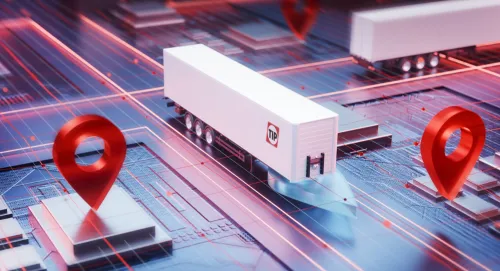Real-time data, real-world impact: the benefits of telematics
Real-time data, real-world impact: the benefits of telematics
Telematics has come a long way from simply tracking assets. These days, it’s a hands-on tool that helps fleet managers keep things running smoothly, and stay on top of compliance. With real-time data and useful insights, fleet managers can spot issues early, and improve how their fleet performs day to day. In this article, we discuss how telematics helps make that possible.
Operational efficiency starts with visibility
Unexpected breakdowns are one of the biggest headaches - and a huge cost driver - for the transport industry. Predictive and preventive maintenance can help avoid those issues by catching problems before they get serious. Telematics systems let you monitor trailer conditions live, so you can plan service at the right moment instead of reacting only after a failure. The result: better uptime and fewer disruptions.
Telematics streamlines operations by consolidating data from every unit – across all brands – into one unified view. No more toggling between multiple systems or screens. With all information in one place, operators can respond faster, make consistent decisions, and shift from reactive problem-solving to proactive fleet management.
"We want customers to have all their insights in one place, whether they use our platform or connect via API to their own," says Christian Payne, Operations Leader Digital Services at TIP. "That flexibility is key to making better decisions without needing to change your internal systems."
And the drivers? They don’t need to change their routine. Once the hardware is installed, data flows automatically, eliminating manual checks and extra lists. “Drivers don’t have to change their routines, but the visibility we gain into brakes, tires, and other critical systems helps prevent breakdowns and ensures the fleet operates safely and reliably,” adds Peter Polman Tuin, Manager International Sales Digital Services at TIP.

Better trailer utilization, better ROI and lower emissions
Knowing which trailers are in use, how often, and in what shape they are, lets you run a tighter operation. You can spot underused or underperforming assets and either reassign them or address the issues, making the most of your fleet.
With a clearer picture of what’s on the road and what’s not, planners can make smarter decisions about capacity and routing. And when the fleet’s sized right, you’re not wasting fuel or time moving empty trailers around.
That kind of efficiency has environmental benefits too. Fewer trips, better planning, and smarter servicing all help lower emissions. For companies working toward sustainability goals, this is a very practical place to start.
Compliance and safety, backed by data
Safety and compliance are key, and telematics can make a big difference here. Tire Pressure Monitoring Systems (TPMS) and Electronic Brake Performance Monitoring Systems (EBPMS) work in the background to keep tabs on two of the most critical safety components: brakes and tires. These tools catch issues early, so operators can fix them before they lead to accidents or even failed inspections.
In the UK for example, TIP serves more than 20,000 trailers running with EBPMS. “It’s already approved as an alternative to regular brake tests – and its use is likely to spread across Europe” says Peter. He explains that, due to the potential increading of safety on the roads, this makes it one of the most impactful applications of telematics right now. Daily brake checks mean better safety, fewer breakdowns, and lower costs for maintenance and compliance. “Instead of visiting a roller brake facility 4 times, with active EBPMS it’s only required to perform 1”, he adds.
With these systems installed and connected to their preferred telematics platform, operators can check safety data anytime and from anywhere. Dashboards give them constant access to trailer status, helping avoid surprises and keeping paperwork in order.
From insights to impact
TIP supports this by offering open, flexible systems that let operators work the way they want. Whether using TIP’s platform or integrating data into another system, the goal is the same: giving operators control, visibility, and the ability to act quickly.
"The next step is openness," says Christian. "We’re working on a platform that gives customers more flexibility in how they connect and use data. It’s about letting them bring in the tools that matter to their operation, they can use ours or someone else’s to bring it all together in one single overview that helps them manage their operation better.”
For fleet managers, the value is clear. Integrated into daily operations, telematics transforms raw data into actionable insights, becoming more than a reporting tool. It helps fleets reduce downtime, improve safety, and run more efficiently.









